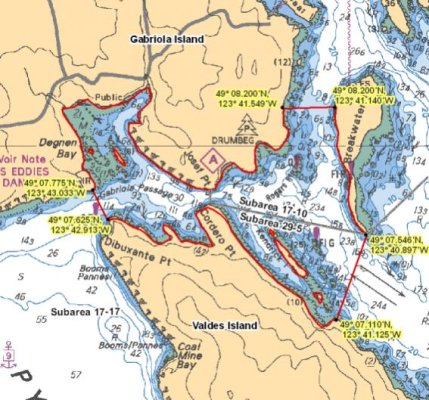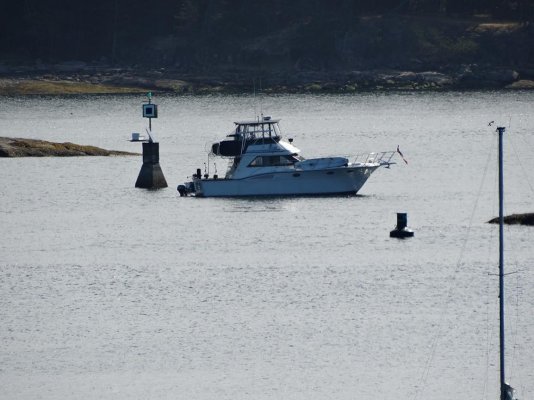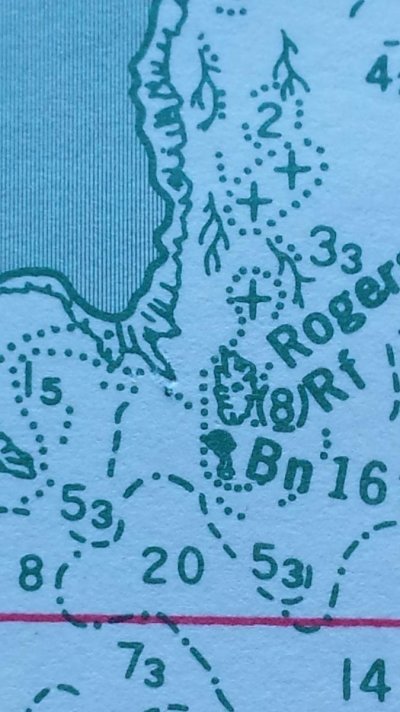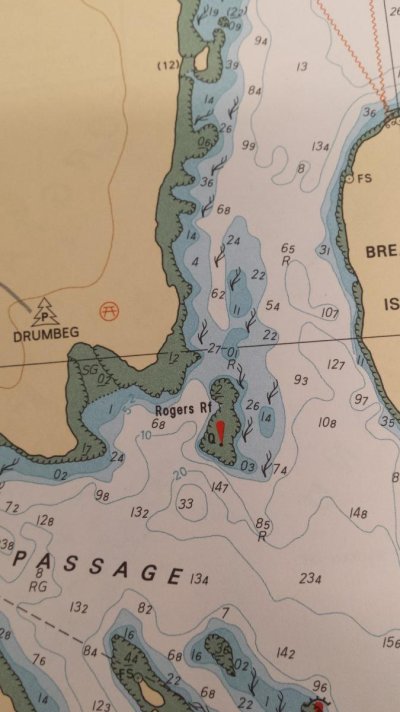Yesterday, as I was heading through Gabriola passage, Eastbound, I encountered a 45' sailboat high on a reef. Another boater was on scene, with a 115 hp dinghy, as I approached in mine, with another 40 hp. We each took a halyard from his masthead and quickly had him heeled to 45 deg and he was able to power off safely.
This morning I returned to the site and took careful note of the position, relying upon my track as recorded on my plotter from the day before. I have now checked the electronic charts that I have in my plotter, on my Phone and in my computer. and the paper charts in my Evergreen Atlas, CHS chart 3310 (Gulf Island Strip Charts). None show the reef accurately, so the fellow's claim that this reef wasn't on the chart has complete credibility. Where he was high out of the water, the charts all show the depth to be over 20 ft. The reef actually protrudes at least 100 ft further than the charts would have you believe.
Ordinarily, this small inaccuracy would cause no concern, but here was a very nice yacht, caught unaware and in imminent danger of serious damage, due only to the inaccuracy of the data that we have all come to rely on as being very accurate. This incident serves to heighten my own awareness of the fallibility of the Canadian Hydrographic Siurveys and the charting software produced by others from that original bad data. I hope this post will heighten the awareness of others.
This morning I returned to the site and took careful note of the position, relying upon my track as recorded on my plotter from the day before. I have now checked the electronic charts that I have in my plotter, on my Phone and in my computer. and the paper charts in my Evergreen Atlas, CHS chart 3310 (Gulf Island Strip Charts). None show the reef accurately, so the fellow's claim that this reef wasn't on the chart has complete credibility. Where he was high out of the water, the charts all show the depth to be over 20 ft. The reef actually protrudes at least 100 ft further than the charts would have you believe.
Ordinarily, this small inaccuracy would cause no concern, but here was a very nice yacht, caught unaware and in imminent danger of serious damage, due only to the inaccuracy of the data that we have all come to rely on as being very accurate. This incident serves to heighten my own awareness of the fallibility of the Canadian Hydrographic Siurveys and the charting software produced by others from that original bad data. I hope this post will heighten the awareness of others.
Last edited:





